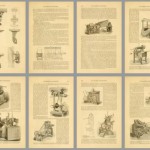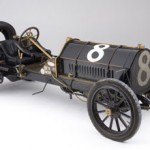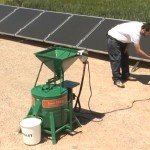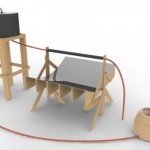“Starting in 1861, the wintertime Union field tent hospitals of the U.S. Civil War often used subterranean heating systems known as Crimean Ovens. The system under discussion was basically a firebox, or oven, on the outside of the tent, with a shallow, brick-lined, sheet-metal-covered trough running down the center of the tent’s interior, and ending in a chimney on the opposite exterior side of the tent. The tents were placed on ground with slight inclines, allowing the hot air to naturally rise and escape out the flue.”
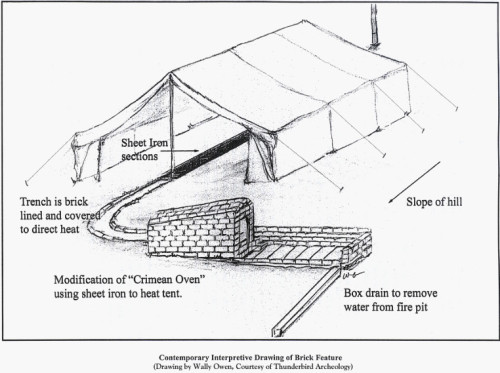
“Dr. Charles Tripler, Surgeon and Medical Director of the Army of the Potomac, writes in a letter of November 1861 the following description of “a modification of the Crimean Oven”, devised and put into operation by Surgeon McRuer, the surgeon of General Sedgewick’s Eighth Brigade:
A trench 1 foot wide and 20 inches deep to be dug through the center and length of each tent, to be continued for 3 or 4 feet farther, terminating at one end in a covered oven fire-place and at the other in a chimney. By this arrangement the fire-place and chimney are both on the outside of the tent; the fire-place is made about 2 feet wide and arching; its area gradually lessening until it terminates in a throat at the commencement of the straight trench. This part is covered with brick or stone, laid in mortar or cement; the long trench to be covered with sheet-iron in the same manner. The opposite end to the fire-place terminates in a chimney 6 or 8 feet high; the front of the fire-place to be fitted with a tight movable sheet-iron cover, in which an opening is to be made, with a sliding cover to act as a blower.
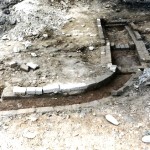 By this contrivance a perfect draught may be obtained, and use more cold air admitted within the furnace than just sufficient to consume the wood and generate the amount of heat required, which not only radiates from the exposed surface of the iron plates, but is conducted throughout the ground floor of the tent so as to keep it both warm and dry, making a board floor entirely unnecessary, thereby avoiding the dampness and filth, which unavoidably accumulates in such places.
By this contrivance a perfect draught may be obtained, and use more cold air admitted within the furnace than just sufficient to consume the wood and generate the amount of heat required, which not only radiates from the exposed surface of the iron plates, but is conducted throughout the ground floor of the tent so as to keep it both warm and dry, making a board floor entirely unnecessary, thereby avoiding the dampness and filth, which unavoidably accumulates in such places.
All noise, smoke, and dust, attendant upon building the fires within the tent are avoided; there are no currents of cold air, and the heat is so equally diffused, that no difference can be perceived between the temperature of each end or side of the tent.”

